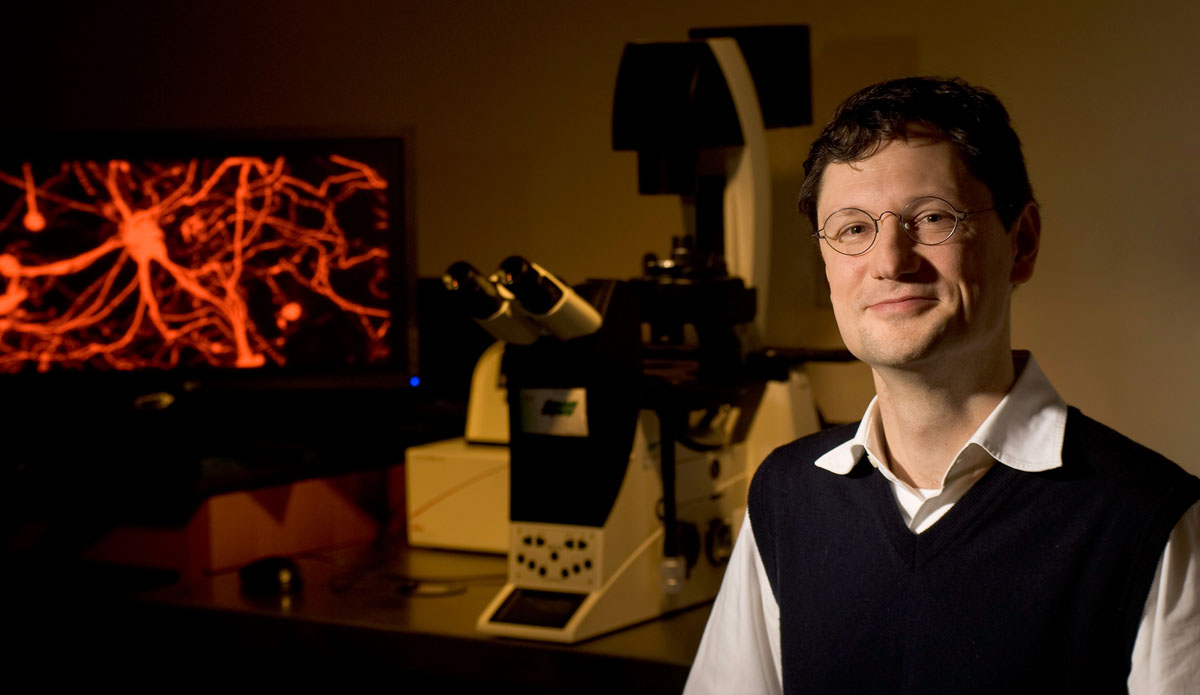Synaptic Characterization of Human Fragile X Neurons

Marius Wernig, PhD
Principal Investigator
Samuele Marro, PhD
FRAXA Fellow
Stanford University
Stanford, CA
2013-2014 Grant Funding: $90,000
Summary
Dr. Marius Wernig and Dr. Samuele Marro at Stanford will analyze homeostatic plasticity and regulation of synaptic strength by retinoic acid. If the results are encouraging, they will move forward with testing whether available RA antagonists can alleviate observed abnormalities in these cells.
The Results
The Science
Scientists in virtually all fields of biology are enthusiastic about the potential of induced pluripotent stem cells (iPSCs). Unlike embryonic stem cells, iPSCs are easy to collect from large numbers of subjects, and there are few regulatory or ethical issues involved in their use.
However, one problem with patient-derived iPSCs (compared to animal models, for example) is that it can be difficult to control for genetic background differences. So this project will use a novel approach: they will start with normal (non-Fragile X) iPSCs, then “knock down” FMR1 expression, with a relatively simple genetic manipulation, to make the equivalent of a human Fragile X knockout. The advantage is that they will have the exact same cell lines without the knockdown, which can serve as a perfect control for all experiments.
To date, the pathogenesis of Fragile X syndrome (FXS) remains elusive because studies of the human brain are restricted to post-mortem analyses. Unfortunately, most animal models fail to fully recapitulate the disease and thus it will be important to gain access to live and functional human neurons affected by FXS to shed light on molecular mechanisms associated with this devastating disease.
Human pluripotent stem cells (PSC) have great potential for disease modeling due to their ability to differentiate in virtually any cell type. However, this avenue suffers from two major limitations: first, the variable genetic background between PSC lines presents a significant impediment to perform rigorous analysis on biological observations. Second, generating neurons from PSC with today’s protocols requires months of tissue culture procedures, and thus makes large-scale studies difficult.
Our laboratory is working to overcome these limitations with a new approach that involves a combination of virus-based genome editing and direct differentiation techniques. We plan to introduce into the genome of a stem cell line the mutation which causes Fragile X syndrome, creating a toggle-switch model where the fmr1 gene can be turned on and off in the exact same line, thus overcoming the background issue. We will then force this cell line to differentiate into neurons using a protocol developed in our lab that yields a great number of human neurons that are able to form network connections within a few weeks. With this robust and reliable system we are planning to test whether previous findings in mouse models are reproducible in a context of human neurons. Specifically we would like to analyze homeostatic plasticity and regulation of synaptic strength by retinoic acid. If our results are encouraging we will be excited to test whether available RA antagonists can alleviate observed abnormalities in these cells.


